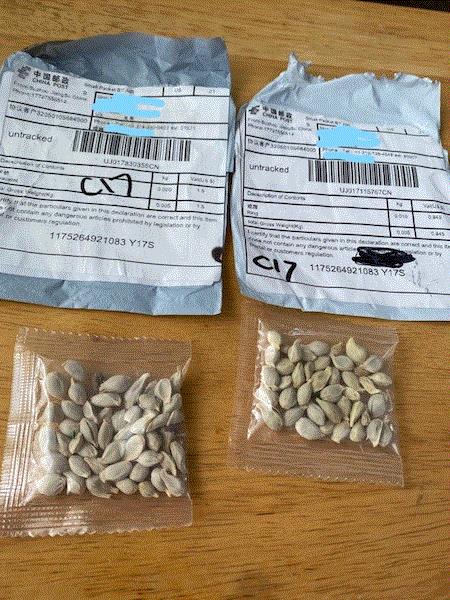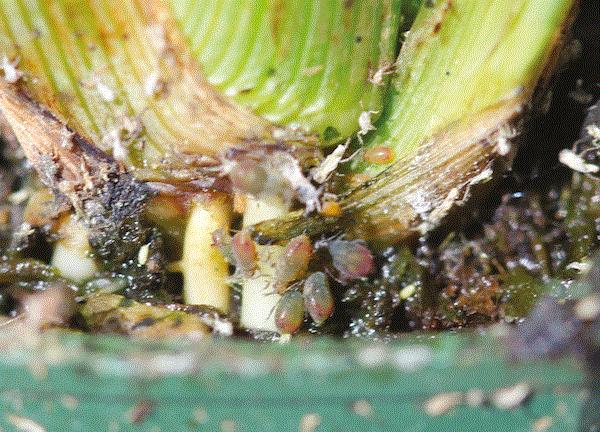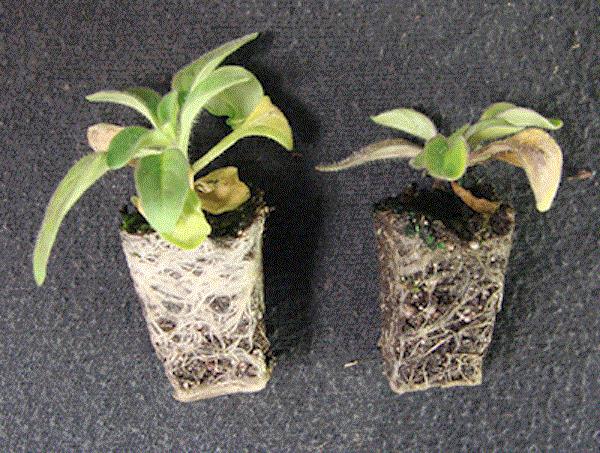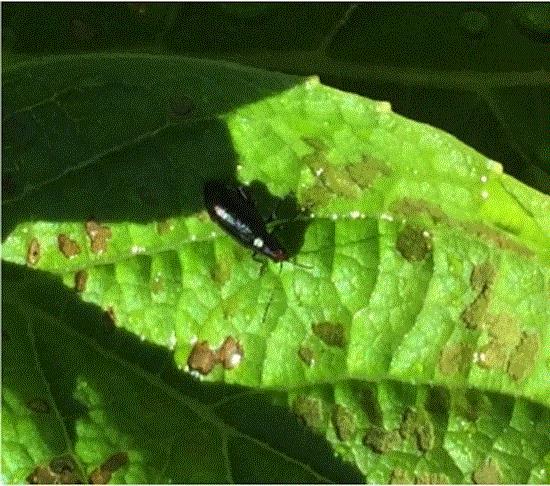What the … earrings?
Okay, I HAVE to start today’s newsletter with something really bizarre.
Did y’all receive a package of seeds you didn't order in the past few weeks? I didn’t, but it appears that thousands of “lucky” people in the U.S., Canada, United Kingdom, Australia and some European countries did. If you’ve received such a package, don't open it and certainly don't plant those seeds to see what kind of plants may come of it.
What make this case very weird is that folks who received the seeds didn't order them and almost all packages were mailed from China; the package just showed up in the “customers’” mailboxes. Also, the actual content of the seed packages clearly didn't fit the description of “studded earrings” on the mail document.
As with anything mysterious or unfathomable, conspiracy theories abound. Some thought this was a Chinese plot to destroy U.S. agriculture or the environment by sowing seeds laced with either deadly plant diseases and poisons, or that these seeds are some invasive species that will take over America. (Worse than kudzu?! The horror!) It also could be the long-lost legendary bean planted by Jack! Some of our citizens had unwittingly become accomplices in an international agro- or eco-terrorism plot by actually planting the seeds. USDA believes the recipients of the mysterious seeds were victims of a “brushing scam.” Brushing scammers are online sellers who send people stuff they didn't order but post fake customer reviews under the recipients’ names, with the goal of boosting customer numbers and sales.

Photo credit: Washington State Department of Agriculture
Instead of sending bean seeds that will grow and grow until they reach the land of the giants in the sky, the seeds turned out to be much more … how should I put it … disappointingly common? There are about 14 species, including hibiscus, rose, mint and cabbage, according to the USDA. Both Bossman Beytes and I thought those seeds we saw in the picture above looked like citrus seeds.
Regardless of the true intention—commercial or terrorism—the USDA is right to worry about diseases or invasive species being introduced through these seeds. If you receive such a package of seeds, don't open the package (it’s not Christmas in August), don't plant the seeds (curb your horticultural enthusiasm), and don't just throw them in the trash (do you know how much junk falls out of the trash truck between your house and the landfill?). Put the seeds and the mailing package in a sealable plastic bag, contact your state or federal Department of Agriculture office, and follow instructions in this link to send the package to your local or federal agriculture official. USDA also shared some information in this Q&A website.

BioCeres approved for root aphid control in Canadian cannabis
Canadian Pest Management Regulatory Agency (PMRA) recently approved the use of BioCeres WP for control of rice root aphid in organic cannabis production in Canada. BioCeres WP contains the entomopathogenic fungus Beauveria bassiana strain ANT-03.
The rice root aphid has been a serious pest of cannabis production in the U.S. and Canada. Whitney Cranshaw of Colorado State University and Suzanne “The Bug Lady” Wainwright-Evans published a great summary of the biology and pest status of rice root aphid in the Journal of Integrated Pest Management a couple of weeks ago. Check out the article by clicking here.

Photo credit: Cranshaw and Wainwright-Evans
The pest status of rice root aphid in Canadian cannabis production is considered an emergency, which prompted PMRA to approve a one-year provisional approval for the use of BioCeres WP for controlling the rice root aphid. Ongoing research projects in Canada and California are gathering efficacy data to support full registration. I chatted with Gretchen Pettis, who was a fellow entomology graduate from University of Georgia, a good friend, and who recently joined BioSafe Systems (the distributor of BioCeres), about this Canadian registration. Gretchen reported that folks have seen the best results when drenching two to three times with a combination of AzaGuard and BioCeres WP.
In the U.S., BioCeres WP is registered for use in greenhouses, nurseries, landscapes and other crop production. Because there is such a patchwork of regulations, I suggest y’all check with your local pesticide regulator on the use of BioCeres on cannabis in your state. Click here for more information on BioCeres WP.

IR-4 publishes thielaviopsis root rot efficacy summary
The summary was published last week, and it’s available by clicking here.
Truth be told, thielaviopsis root rot (also called black root rot) has always been relegated to the “other root rots” group in my mind. Whenever the conversation at a party turns to root rot diseases, I’m always like, “Yeah, that pythium and phytophthora, man, let me tell ya …” Instead of, “Yeah, that fusarium, rhizoctonia and thielaviopsis, man, let me tell ya …” (By the way, my party conversations often involve bugs but never plant diseases. Y’all know that, right?)

Photo credit: Michigan State University
Don't get me wrong, black root rot is a BIG deal. Michigan State University Extension has a good factsheet on how to manage this disease. Buying root rot-free plugs, stringent sanitation practices, irrigation control, fungus gnat (which can move the spores around) control, and fungicide rotation are important keys in managing black root rot.
From 2003 to 2018, IR-4 collaborators conducted 14 trials, testing 31 active ingredients applied as a biweekly soil drench against black root rot. The standards used in these trials—3336 (thiophanate-methyl; FRAC Group 1) and Terraguard (triflumizole; 3)—provided excellent control. Several products that haven't been registered for black root rot also showed good efficacy, including Empress Intrinsic (pyraclostrobin; 1), Mural (azoxystrobin + benzovindiflupyr; 11 + 7), Stargus (Bacillus amyloliquefaciens strain F727; BM02) and Tourney (metconazole; 3). Affirm (polyoxin D; 19), Medallion (fludioxonil; 12) and Orkestra Intrinsic (fluxapyroxad + pyraclostrobin; 7 + 11), which are registered for black root rot management, had mixed efficacy in the IR-4 trials.

Is redheaded flea beetle a big deal for you? Tell us!
I’m not going to pretend I know much about black root rot. In fact, after 20 years of being a professional entomologist, I’m not even sure I know much about bugs I’m supposed to find a way to kill. That’s humbling, especially for a "piled-higher-and-deeper."
One pest that has caused much head scratching is the redheaded flea beetle. This beast has become one of the most vexing and damaging pests of shrub production in the past few years. I’ve talked about using insecticides and nematodes to control them in a couple of previous issues. Unfortunately, I cannot say we’re closer to finding a solution.

Shimat Joseph (University of Georgia) and I received a grant from the Southern Region IPM Center to form a working group, which serves to put researchers and growers in the same (virtual) room to try to share information and experience, and to develop a coordinated research and extension plan. Coordination helps to solve some of the redheaded flea beetle problems in nurseries without duplicating efforts. The first thing our working group wants to find out is, “Is redheaded flea beetle really a big deal for everybody?” Here is the thing about getting the feds to foot any bill in funding research for pest management solutions: a researcher like me has to demonstrate that a pest problem we have identified as important is actually impacting real people. And, whatever research and extension activities we plan to do have to address what stakeholders (i.e. you) think are important.
“JC said so” just doesn't cut it. That’s another hard pill to swallow for a "piled-higher-and-deeper."
So, please help us by completing two surveys. Okay, I know how you feel about another survey. You can roll your eyes and cuss all you want while taking the survey, and I don't have anything to bribe you with. Please help us, if you want to see that face at the top left corner of this newsletter continue to smile.
Anyone can do the surveys, whether you are a grower (or not), and whether you have to call redheaded flea beetle all kinds of names (or not). “Redheaded what?” and “I can't imagine someone giving you money to research this beetle,” are also valuable responses.
The first survey is trying to gauge if and how important redheaded flea beetle is in your life. Click here to start the survey. I completed this survey in less than three minutes.
The second survey is also short, although the list may look long. (I completed this survey in five minutes.) In this survey, you’ll tell us how important the listed research and extension activities are to you and your operation. Click here to start the survey.
Thanks for your help!





See y'all next time!

JC Chong
Professor of Entomology at Clemson University
This e-mail received by 23,162 subscribers like you!
If you're interested in advertising on PestTalks contact Kim Brown ASAP!